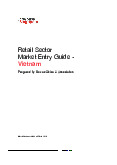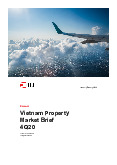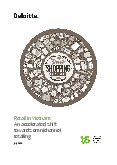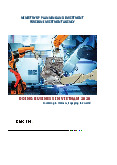




Preview text:
Midterm Exam – MATH105 (Mock Test) (Fall 2023) - KEYS
Part 1 – Multiple Choice 1)
Two events, A and B, are mutually exclusive and each have a nonzero probability. If event A is known to
occur, the probability of the occurrence of event B is a. One b. any positive value c. Zero d. any value between 0 to 1 2)
On a December day, the probability of snow is .30. The probability of a "cold" day is .50. The
probability of snow and "cold" weather is .15. Are snow and "cold" weather independent events?
a. only if given that it snowed b. No c. Yes
d. only when they are also mutually exclusive 3)
If two groups of numbers have the same mean, then
a. their standard deviations must also be equal
b. their medians must also be equal
c. their modes must also be equal
d. None of these alternatives is correct. 4)
The heights (in inches) of 25 individuals were recorded and the following statistics were calculated mean = 70 range = 20 mode = 73 variance = 784 median = 74
The coefficient of variation equals a. 11.2% b. 1120% c. 0.4% d. 40% 5)
If two events are independent, then
a. they must be mutually exclusive
b. the sum of their probabilities must be equal to one
c. their intersection must be zero
d. None of these alternatives is correct. 6) If a six-sided die is tossed t
wo times and "3" shows up both times, the probability of "3" on the third trial is
a. much larger than any other outcome
b. much smaller than any other outcome c. 1/6 d. 1/216 1 7)
If P(A) = 0.5 and P(B) = 0.5, then P(A Ç B ) a. is 0.00 b. is 1.00 c. is 0.5
d. None of these alternatives is correct. 8)
If A and B are independent events with P(A) = 0.35 and P(B) = 0.20, then, P(A È B) = a. 0.07 b. 0.62 c. 0.55 d. 0.48 9)
If P(A) = 0.45, P(B) = 0.55, and P(A È B) = 0.78, then P(A ½ B) = a. Zero b. 0.45 c. 0.22 d. 0.40 10)
A random sample of 49 statistics examinations was taken. The average score, in the sample, was 84 with
a variance of 12.25. The 95% confidence interval for the average examination score of the population of the examinations is a. 76.00 to 84.00 b. 77.40 to 86.60 c. 83.00 to 85.00 d. 68.00 to 100.00 11)
The expected value of a discrete random variable
a. is the most likely or highest probability value for the random variable
b. will always be one of the values x can take on, although it may not be the highest
probability value for the random variable
c. is the average value for the random variable over many repeats of the experiment
d. None of these alternatives is correct. 12)
In a standard normal distribution, the probability that Z is greater than zero is a. 0.5 b. equal to 1 c. at least 0.5 d. 1.96 13)
A uniform probability distribution is a continuous probability distribution where the probability that the
random variable assumes a value in any interval of equal length is
a. different for each interval
b. the same for each interval c. at least one
d. None of these alternatives is correct. 14)
A random sample of 1000 people was taken. Four hundred fifty of the people in the sample favored
Candidate A. The 95% confidence interval for the true proportion of people who favors Candidate A is a. 0.419 to 0.481 b. 0.40 to 0.50 c. 0.45 to 0.55 d. 1.645 to 1.96 15)
Z is a standard normal random variable. The P (1.20 Z 1.85) equal s a. 0.4678 b. 0.3849 c. 0.8527 d. 0.0829 2 16)
X is a normally distributed random variable with a mean of 8 and a standard deviation of 4. The
probability that X is between 1.48 and 15.56 is a. 0.0222 b. 0.4190 c. 0.5222 d. 0.9190 17)
The measure of dispersion that is influenced most by extreme values i s a. the variance b. the standard deviation c. the range d. the interquartile range 18)
Random samples of size 81 are taken from an infinite population whose mean and standard deviation are
200 and 18, respectively. The distribution of the population is unknown. The mean and the standard error of the mean are a. 200 and 18 b. 81 and 18 c. 9 and 2 d. 200 and 2 19)
Doubling the size of the sample wil l
a. reduce the standard error of the mean to one-half its current value
b. reduce the standard error of the mean to approximately 70% of its current value
c. have no effect on the standard error of the mean
d. double the standard error of the mean 20)
A random sample of 144 observations has a mean of 20, a median of 21, and a mode of 22. The
population standard deviation is known to equal 4.8. The 95.44% confidence interval for the population mean is a. 15.2 to 24.8 b. 19.200 to 20.800 c. 19.216 to 20.784 d. 21.2 to 22.8 21)
A population has a mean of 300 and a standard deviation of 18. A sample of 144 observations will be
taken. The probability that the sample mean will be between 297 to 303 is a. 0.4332 b. 0.8664 c. 0.9545 d. 0.0668 22)
A 95% confidence interval for a population mean is determined to be 100 to 120. If the confidence
coefficient is reduced to 0.90, the interval for µ a. becomes narrower b. becomes wider c. does not change d. becomes 0.1 3
Part 2 – Work-out Problems
(SHOW ALL YOUR WORKS IN DETAILS TO RECEIVE FULL CREDITS) 1)
In a city, 60% of the residents live in houses and 40% of the residents live in apartments. Of the
people who live in houses, 20% own their own business. Of the people who live in apartments, 10% own their own business. a)
What is the probability that a random resident lives in a house and owns his/her own business? b)
What is the probability that a random resident owns his/her own business? c)
If a person owns his or her own business, find the probability that he or she lives in a house. Keys: P(house)=0.6; P(apt.) = 0.4;
P(business|house) = 0.2; P(business|apt.) = 0.1 a)
P(house AND business) = P(house)*P(business|house) = 0.6*0.2 = 0.12 b)
P(business) = P(house AND business) + P(apt. AND business)
= P(house)*P(business|house) + P(apt.)*P(business|apt) = 0.6*0.2 + 0.4*0.1 = 0.16
!(#$%&'()*+(,%&-.'&&) c) P(house|business) = = 7.9: = 0.75 0(12345633) 7.9; 4 2)
Scores on a recent national statistics exam were normally distributed with a mean of 80 and a standard deviation of 6. a.
What is the probability that a randomly selected exam will have a score of at least 74? b.
What percentage of exams will have scores between 89 and 92? c.
If the top 2.5% of test scores receive merit awards, what is the lowest score eligible for an award? d.
If there were 334 exams with scores of at least 89, how many students took the exam? e)
Suppose that the number of students taking the exam is quite large, in a random group of 6 students
exactly three (03) of them gets scores of less than
what is the probability that there are 74? f)
Also suppose that the number of students taking the exam is quite large, what is the probability
that the mean score of a random group of 6 students is less than 74? KEYS : a) 𝑋~𝑁(8 , 0 6!)
𝑃(𝑋 ≥ 74) = 𝑃 /𝑍 ≥ "#$%&1 = 𝑃(𝑍 ≥ −1)= 0.8413 ' b)
𝑃(89 ≤ 𝑋 ≤ 92) = 0.0441 c) 91. 8 d)
𝑃(𝑋 ≥ 89)= 0.00668 à n = 334/0.0668 = 5000 e) Let p = P(X < 74) = 1 – 0.8413
= 0.1587 ; Let Y be the number of students in a group of 6 getting scores
less than 74, then Y ~ Binom(n = 6; p = 0.1587)
𝑃(𝑌 = 3) = /6 1 𝑝((1 − 𝑝)'$( = 0.048 3 f)
𝑛 = 6<(𝑠𝑎𝑚𝑝𝑙𝑒<𝑠𝑖𝑧𝑒);< E 𝑋
~𝑁 /80, '! 1 , 𝑖. 𝑒. 𝑋E~𝑁(80, 6). '
Need to find 𝑃(𝑋E < 74) = 𝑃 /𝑍 < "#$%&1 = 𝑃(𝑍 < −2.45) = 0.0071 √' 5




